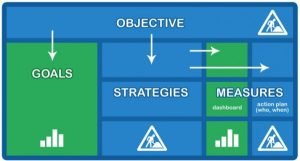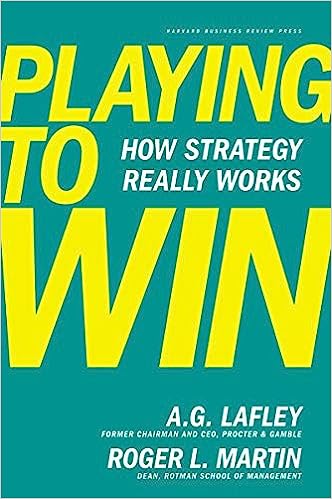At Vilna Gaon, we combine Procter & Gamble’s OGSM and ScaleUp’s OPSP . While the bout OGSM vs OPSP is a no-match, those 2 methodologies are perfect when aligned.
Procter & Gamble’s OGSM

OGSM is a strategic planning framework used by Procter & Gamble (P&G) and many other companies to develop and execute business strategies. OGSM stands for Objective, Goals, Strategies, and Measures, and it provides a clear and structured way to align teams and departments around a common set of objectives and goals.
Here is an overview of the OGSM framework used by P&G:

- Objective: The Objective is the long-term vision or mission of the company. It defines what the company wants to achieve in the future and serves as the guiding principle for all strategic planning activities.
- Goals: Goals are specific, measurable, and time-bound targets that are aligned with the objective. Goals provide a clear direction for the organization and help focus resources on what is most important. P&G uses a set of standard goal categories, such as volume, market share, sales growth, cost reduction, and productivity improvement.
- Strategies: Strategies are the high-level plans or initiatives that will be executed to achieve the goals. Strategies should be focused, realistic, and aligned with the company’s strengths and resources. P&G encourages teams to identify no more than five key strategies per goal.
- Measures: Measures are the metrics or KPIs that will be used to track progress against the goals and strategies. Measures should be specific, measurable, and relevant to the objective and goals. P&G uses a set of standard measures, such as sales, profit, share, customer satisfaction, and employee engagement.
P&G uses the OGSM framework to create a cascade of goals and strategies from the company level down to individual departments and employees. This helps ensure that everyone is aligned and working towards the same objectives, and it provides a structured way to monitor progress and adjust plans as necessary.
OPSP by Scale Up
OPSP stands for One-Page Strategic Plan, which is a simplified version of the traditional strategic plan developed by Scaling Up, a business coaching and training organization. The OPSP is designed to be a quick and easy-to-use tool for entrepreneurs and executives to align their team and focus on the most important strategic priorities.
Here are the key components of an OPSP:
- Values: This section outlines the company’s core values, which guide decision-making and behavior. It’s important to ensure that everyone on the team understands and embodies these values.
- Purpose: The purpose statement describes the company’s reason for existence and the impact it wants to make. It should be inspiring and motivating for both employees and customers.
- Big Hairy Audacious Goal (BHAG): The BHAG is a long-term (10-25 years) goal that stretches the company and inspires innovation and growth. It should be specific, measurable, and audacious.
- Brand Promise: The brand promise is the unique value proposition that the company offers to its customers. It should be clear, differentiated, and relevant.
- Key Initiatives: The key initiatives are the most important strategic priorities that the company needs to focus on in the next 12-24 months. These initiatives should be aligned with the BHAG and brand promise.
- Quarterly Priorities: The quarterly priorities are specific actions that need to be taken in the next 90 days to move the key initiatives forward. These priorities should be assigned to specific individuals or teams, with clear deadlines and accountability.
- Metrics: The metrics section outlines the key performance indicators (KPIs) that will be used to measure progress towards the BHAG, key initiatives, and quarterly priorities. It’s important to track and review these metrics regularly to ensure that the company is on track.
The OPSP is designed to be a living document that can be updated and revised as needed. It’s a powerful tool for aligning teams, focusing on the most important priorities, and driving growth and success.
For a detailed audit of your marketing channels, read our article Auditing your Marketing Channels.

6 replies on “OGSM vs OPSP – A winners’ match”
[…] strongly suggest to get a WordPress website to publish content about their owned keywords (see OGSM) and capture emails. Here are some reasons why modifying WordPress can be […]
help with college essay
OGSM vs OPSP – A winners' match – Vilna Gaon Sales Agency
[…] related posts: OGSM vs OPSP – A winners’ match and Auditing your Marketing […]
[…] related posts: OGSM vs OPSP – A winners’ match and Auditing your Marketing […]
[…] related posts: OGSM vs OPSP – A winners’ match and Auditing your Marketing […]
[…] related posts: OGSM vs OPSP – A winners’ match and Auditing your Marketing […]